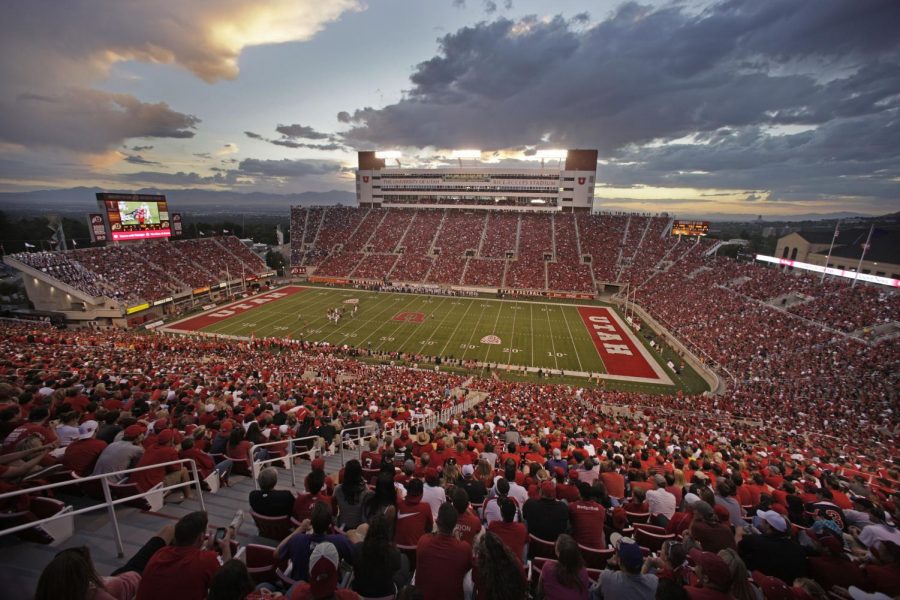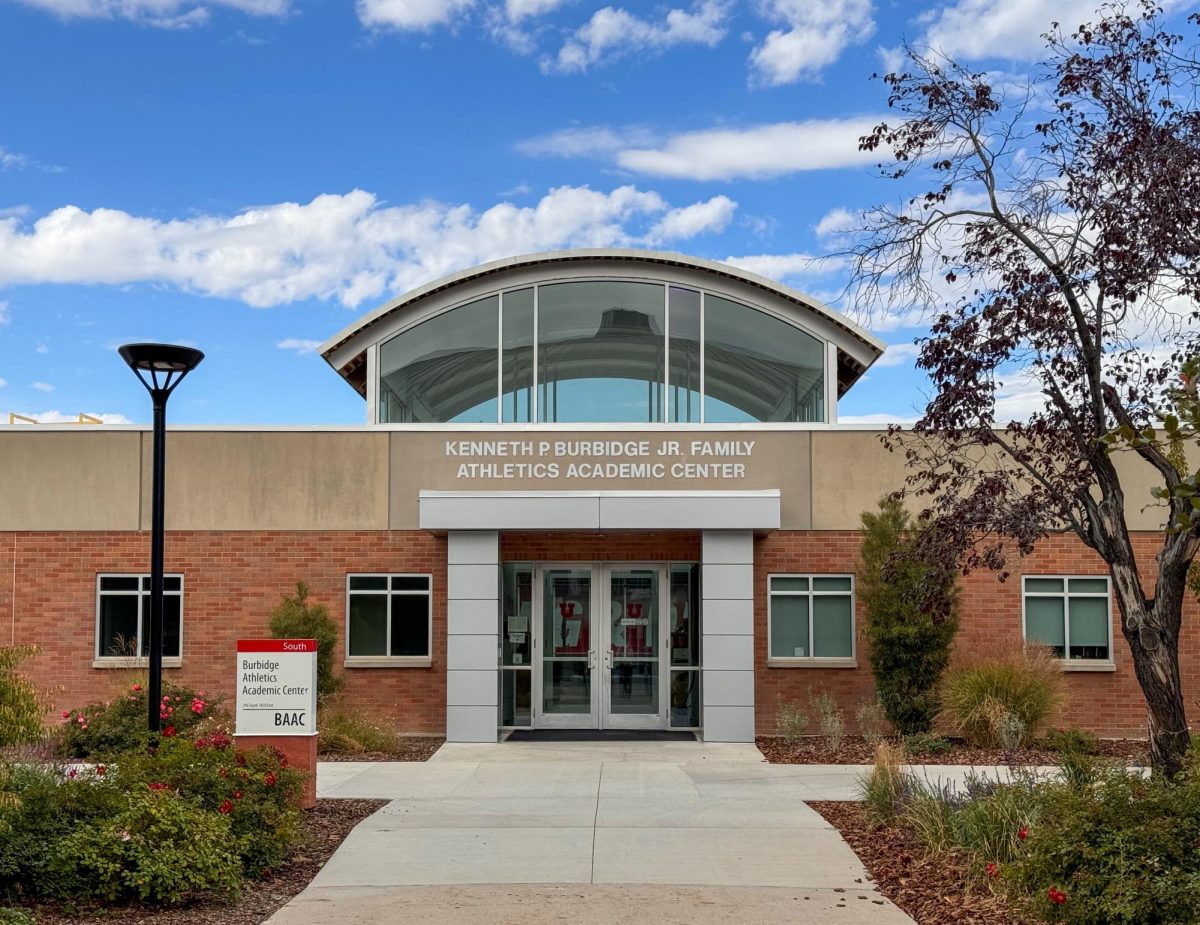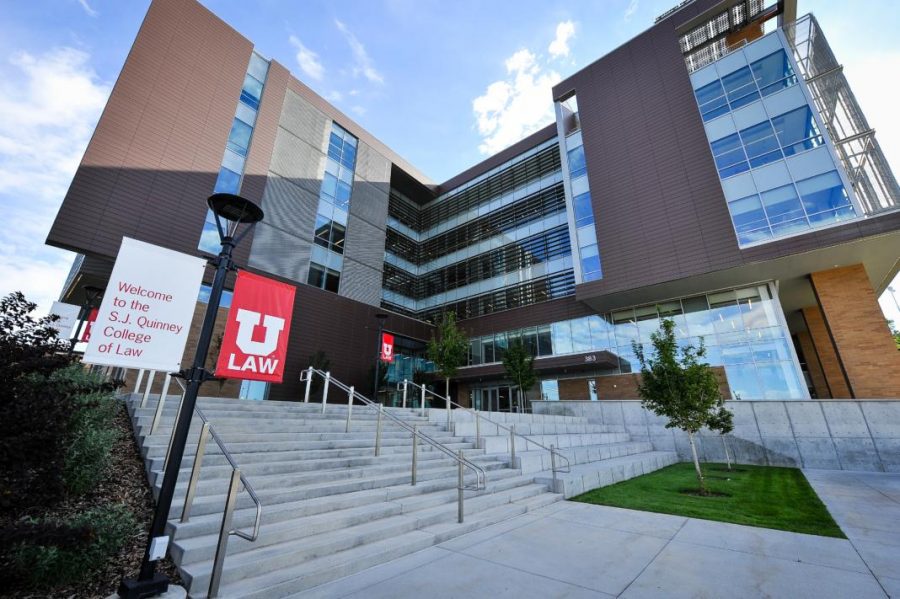University of Utah Athletic Facility Set to Open on June 15
Rice-Eccles stadium as the University of Utah plays University of Washington in Utah’s first PAC 12 home game Saturday, Oct. 1, 2011,in Salt Lake City Utah. Photo by Tom Smart/University of Utah Sports Information
June 3, 2020
As the United States slowly starts to regain some semblance of normalcy after COVID-19, the University of Utah Athletic department rolled out their plan to allow student athletes back on campus for voluntary in-person workouts. Starting June 15, athletes in certain sports will be able to return to campus.
In-state student athletes from football, volleyball, gymnastics, soccer, men’s basketball and women’s basketball will be the first wave of athletes who are allowed back on June 15. On June 22, out-of-state athletes from the same sports will also be allowed back on campus. All new athletes to those teams will be granted housing a few days later on the 28th.
If all goes well during this phase, the U hopes to let athletes from all remaining sports back in July.
“We have been working collaboratively with the Pac-12 and their medical group, and also working with our students along the way. Many of our students are anxious to come back and work out in these incredible facilities that we’re blessed to have,” said athletic director Mark Harlan in a video conference with the media. “Of course, our obligation is to do it in the safest possible manner, and that’s what we plan to do.”
Before initially being allowed into the facilities, both athletes and staff will be required to fill out a screening form. Athletes will also take both an antibody test as well as a PCR COVID-19 test for active shedding of the virus. Staff will be tested based on contact with the athletes. Dr. David Petron, who is the Head Team Physician as well as a member of Pac-12 COVID-19 Medical Advisory Committee, said that the tests will help the department identify who has the virus before they come in contact with other members of their teams.
“We’re going to start the test with a qualitative test, meaning it would just be a positive or a negative test. And then if that test is positive, we do a further test to make it a more accurate test by doing a quantitative test so we know the tighter the antibodies, both IgM and IgG type antibodies,” Petron said. “So if we combine those two tests, it helps us pin down who might have been positive in the past. We feel like we could do further testing for the protection of the athletes, specifically cardiac and pulmonary.”
Everyone who enters the facilities will be required to have a face covering and will have their temperature taken prior to being allowed entrance. This process will take place each time someone enters the facility. Individuals will be issued a colored wristband for the day they will be working out. The wristband will change color daily.
The plan that is currently in place could change depending on the color code of the state.
“All the steps and procedures that we have in place right now are conforming with Phase Orange of the state,” said Director of Athletic Training Trevor Jameson. “As we look at what the state allows for this level we’re meeting that and we plan on doing that for several weeks. Whatever color the state is in, we’re going to follow those guidelines.”
Deputy athletic director Kyle Brennan says that athletes won’t be required to live on campus but that they still need to be safe. To maintain that safety they will be required to also participate in contact tracing to keep themselves as well as the rest of the department healthy.
“When it comes to our student-athletes, they’re adults—they’re young people but they’re adults, they have lives outside of here,” Brennan said. “Our job is to do everything we can to educate them and put them in the best situation possible to handle these situations when they come into them.
The full plan can be viewed here.








